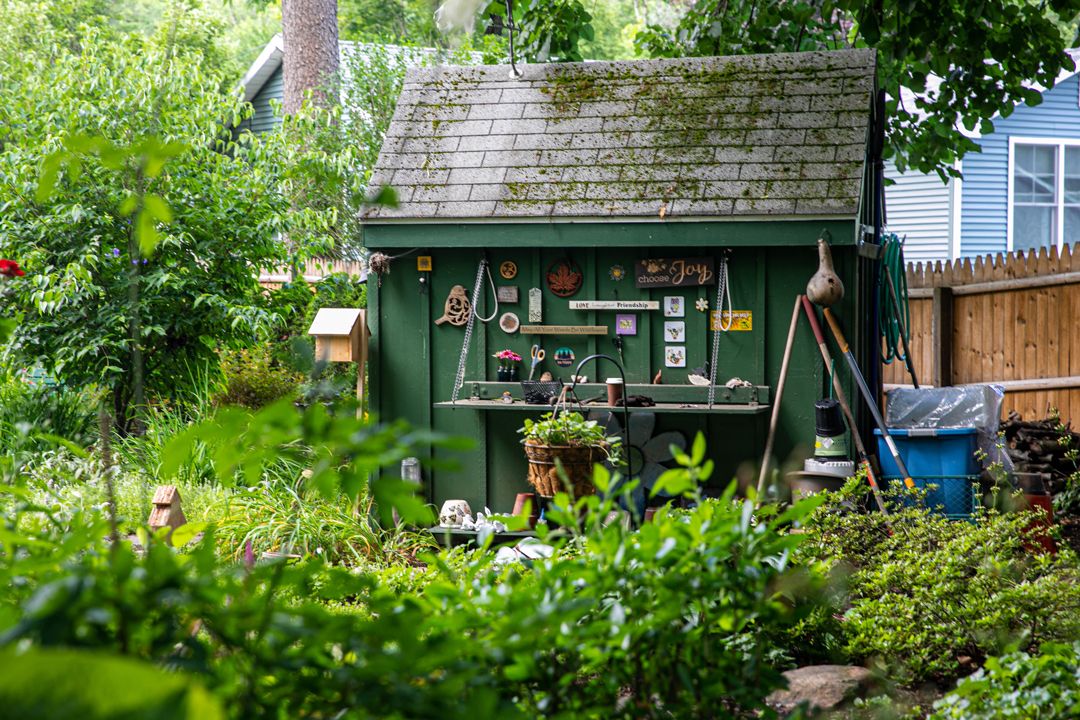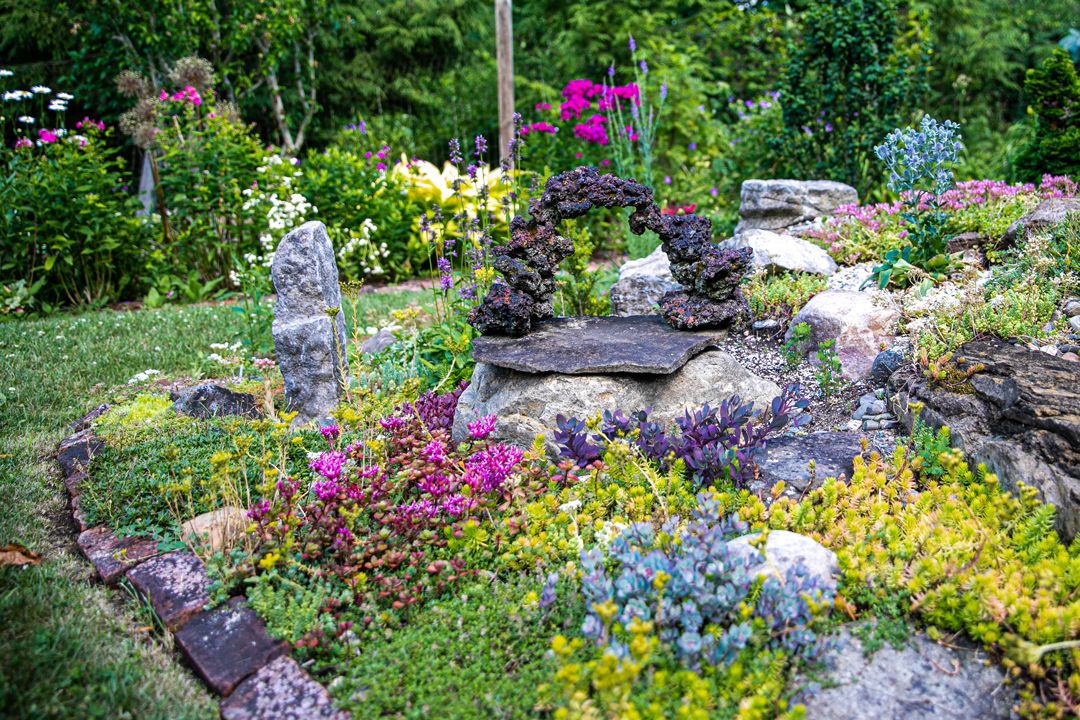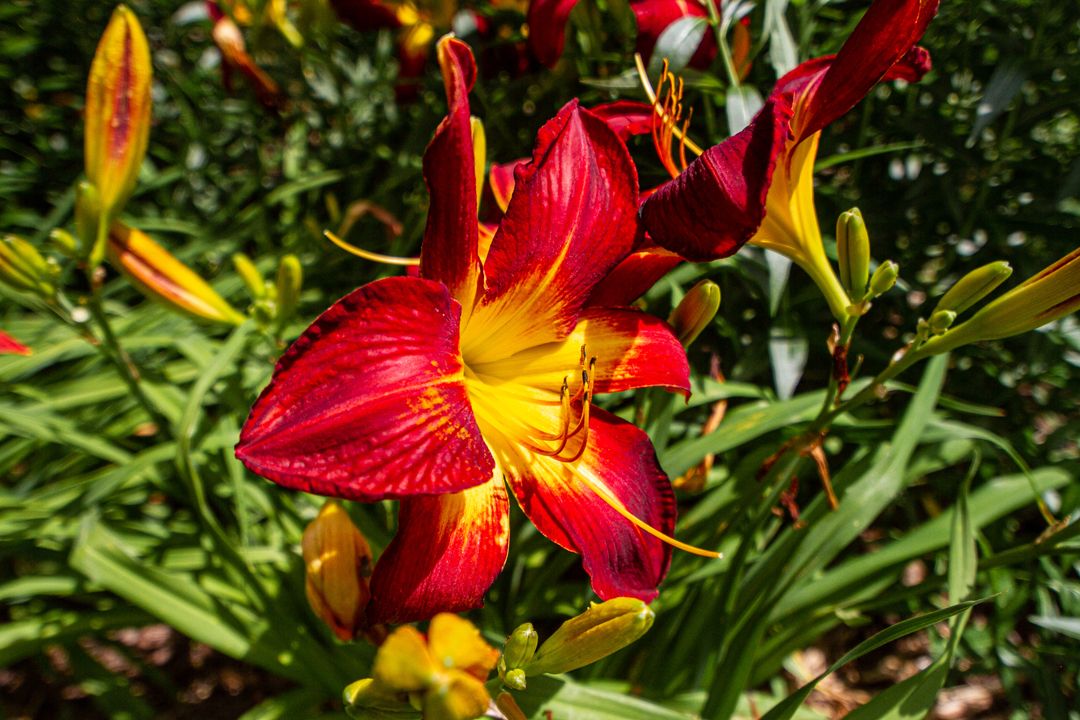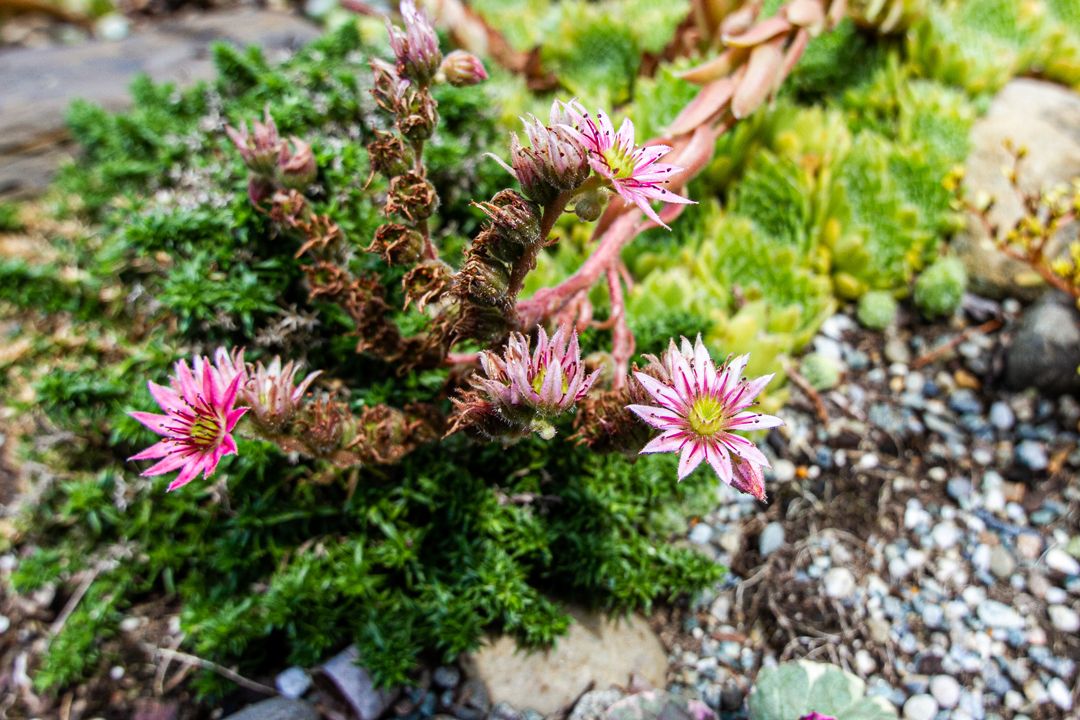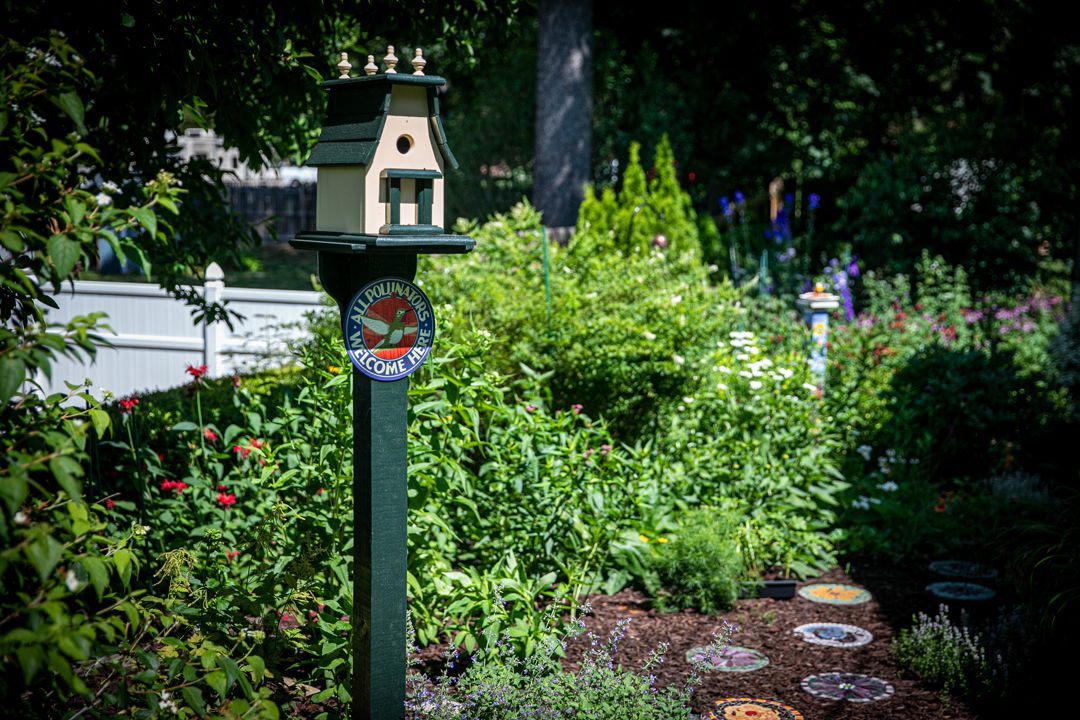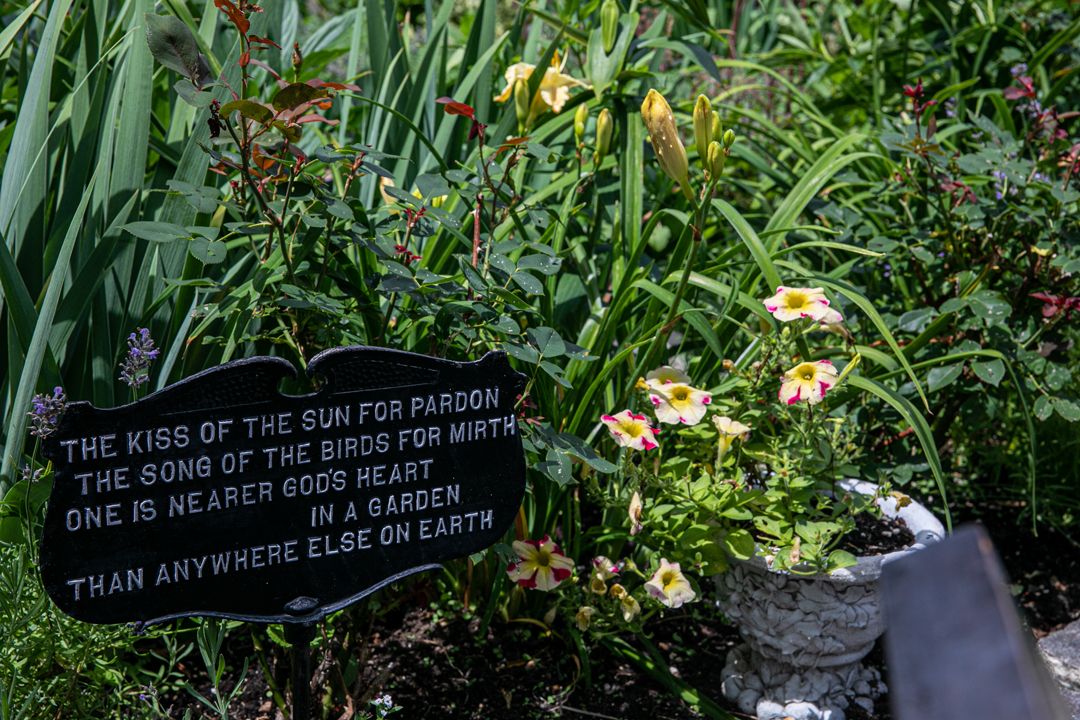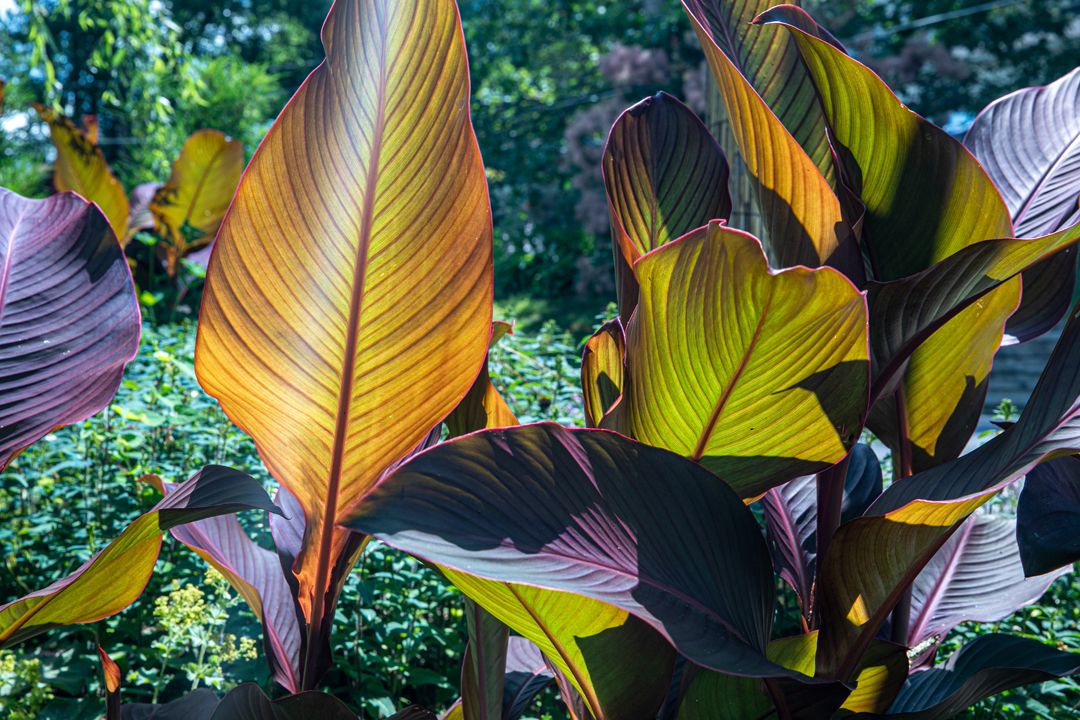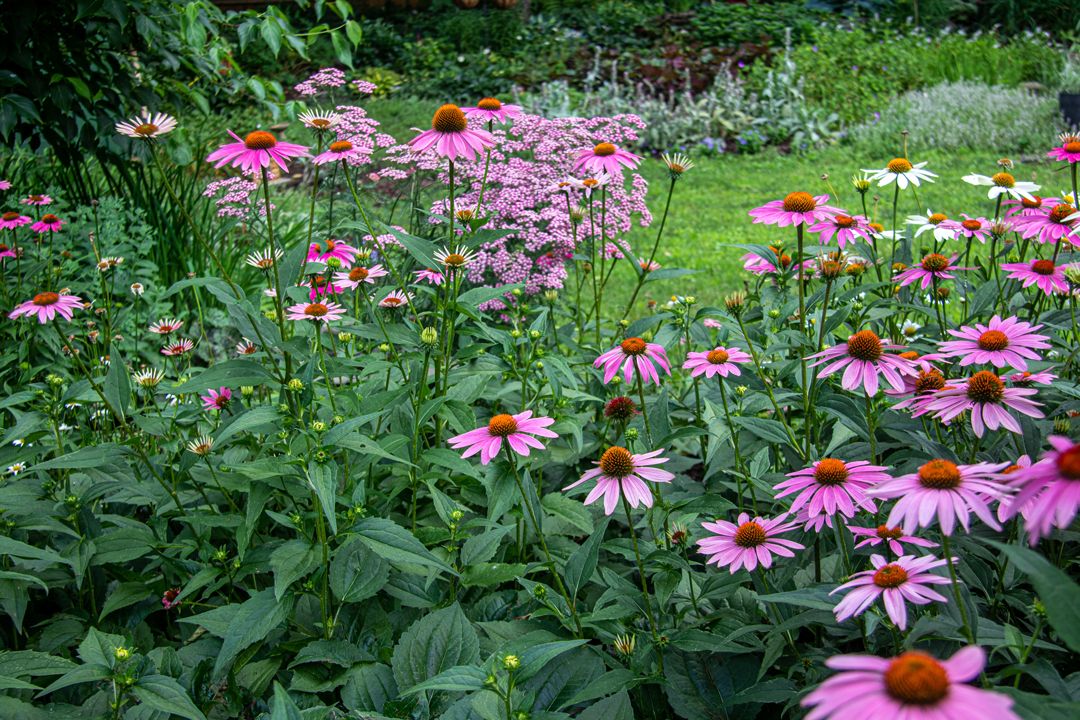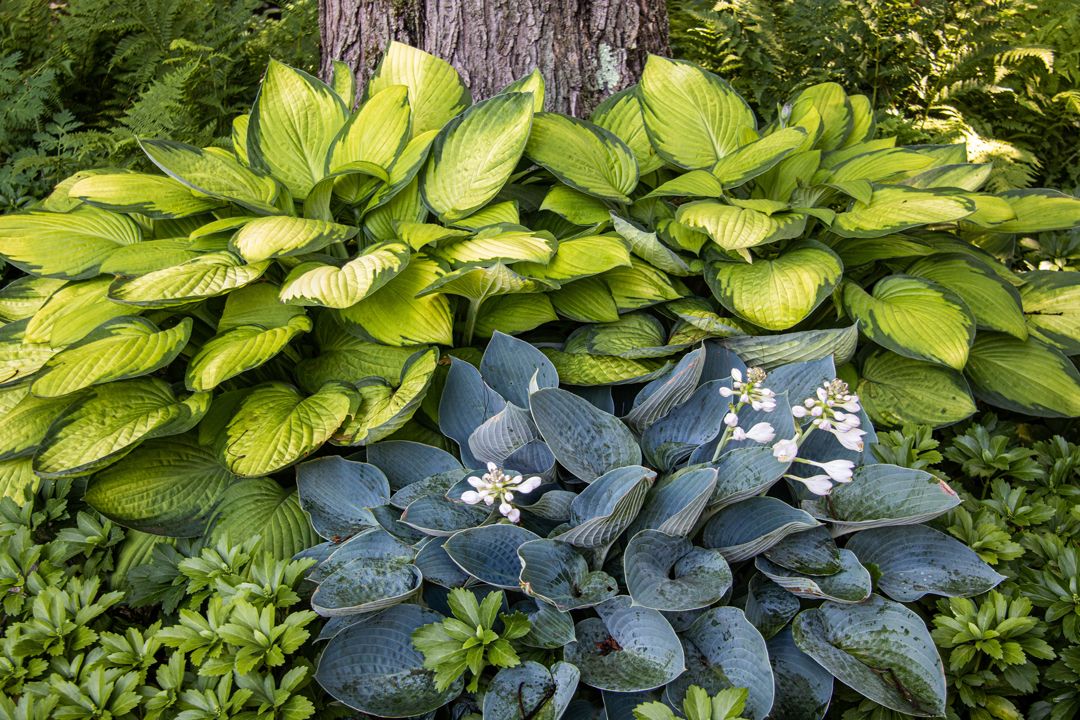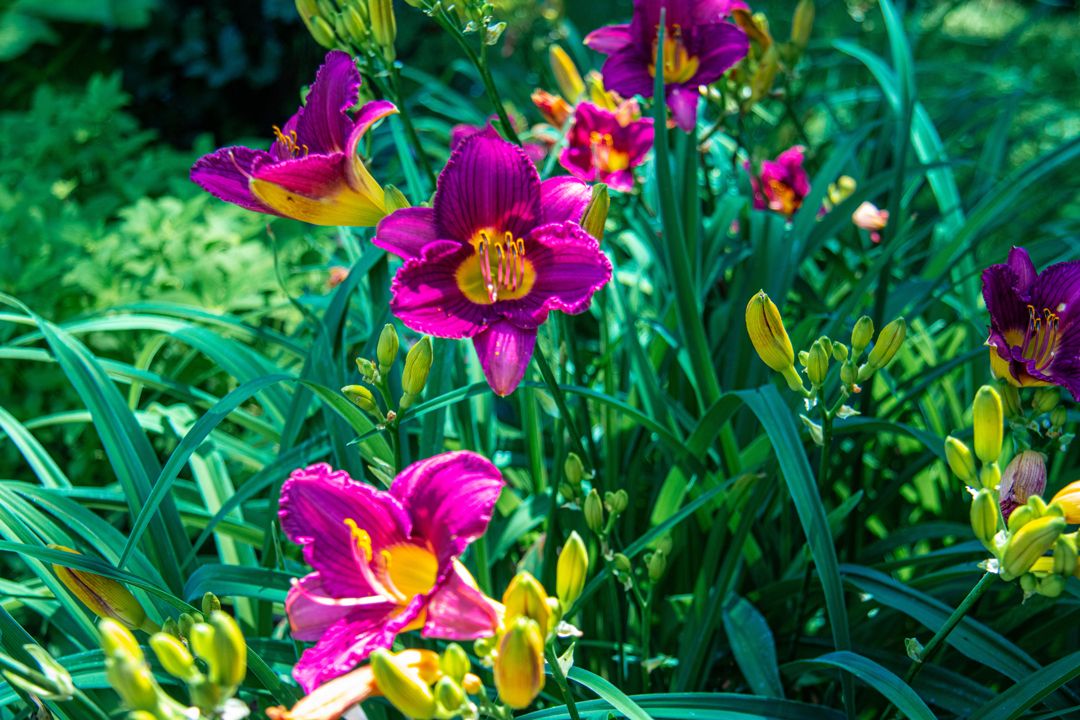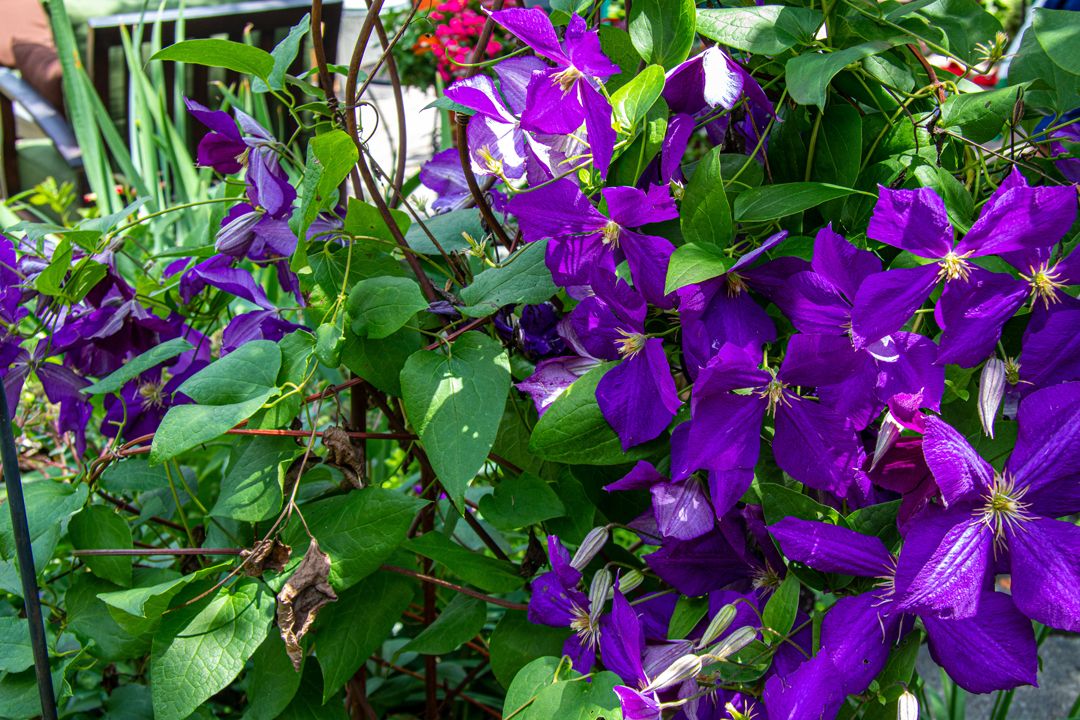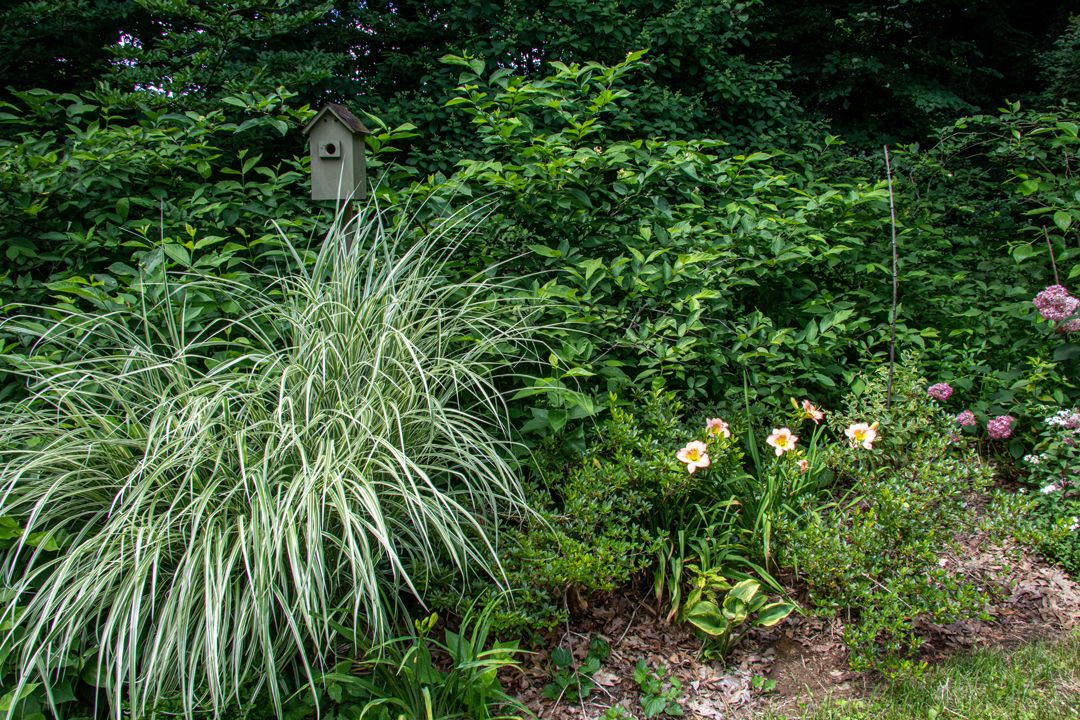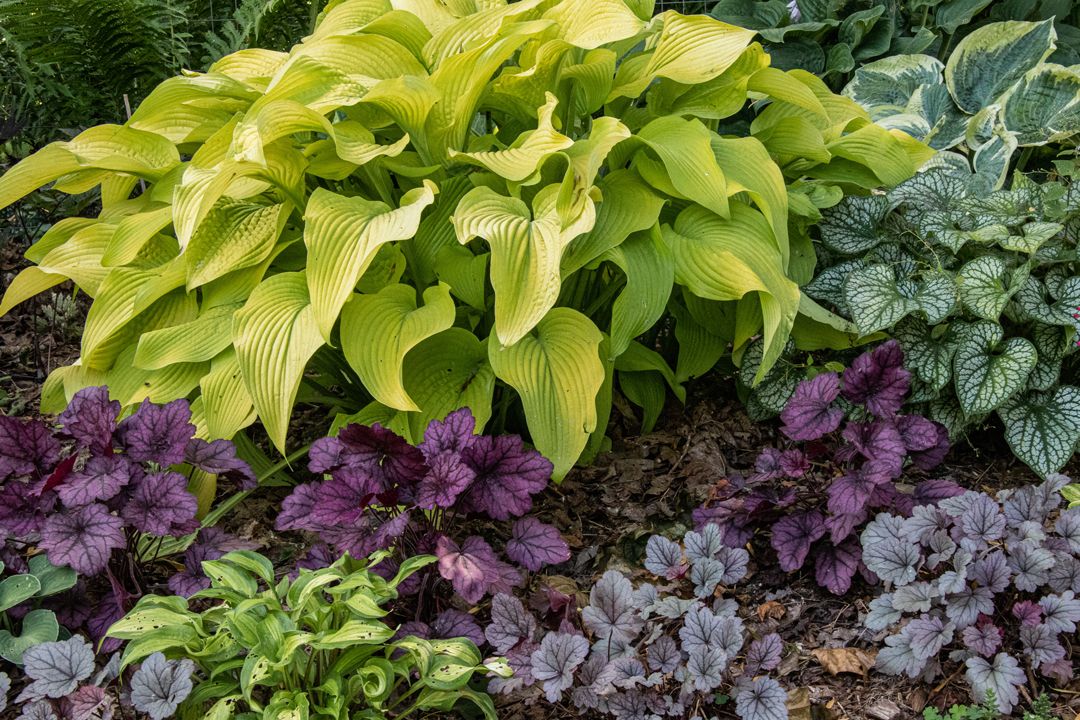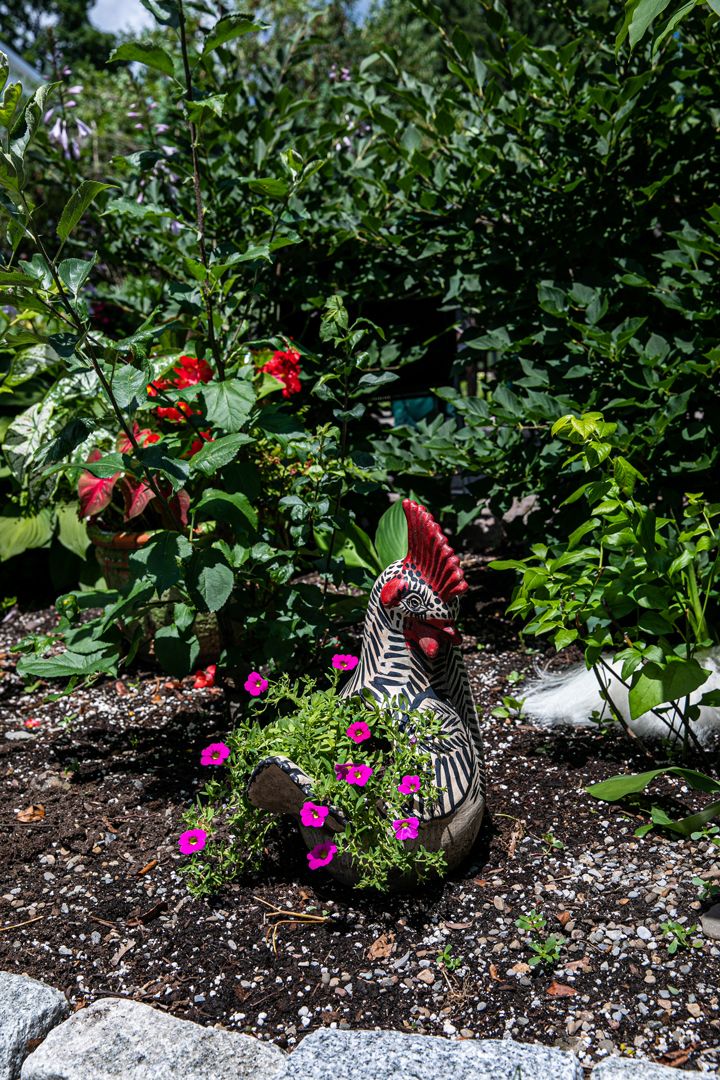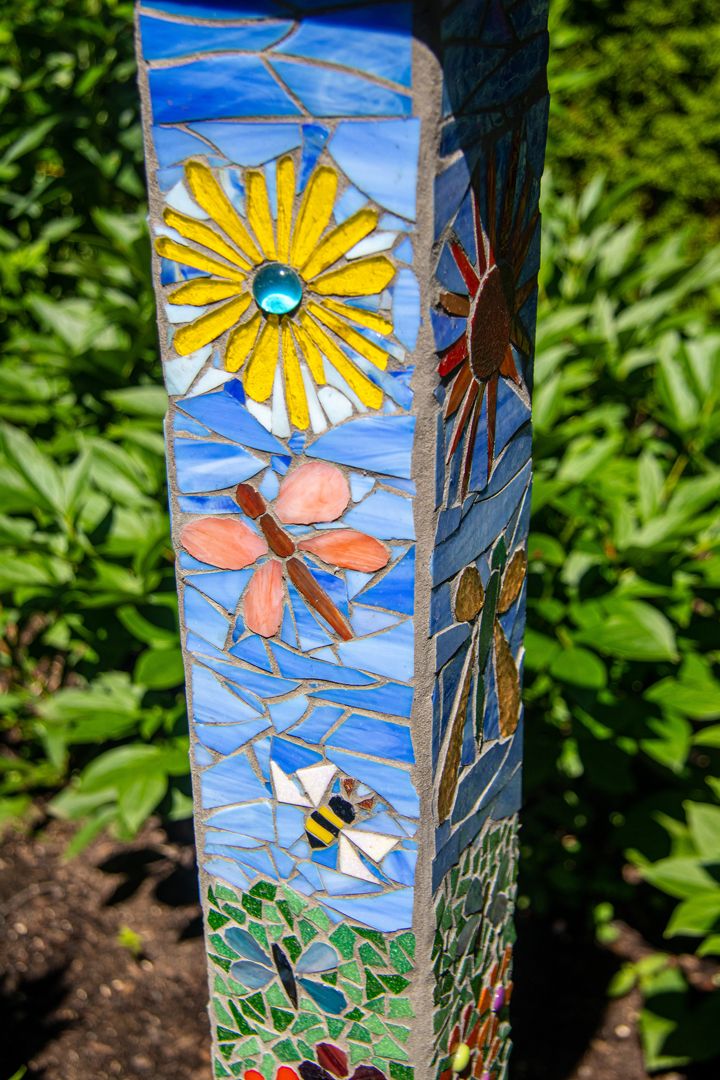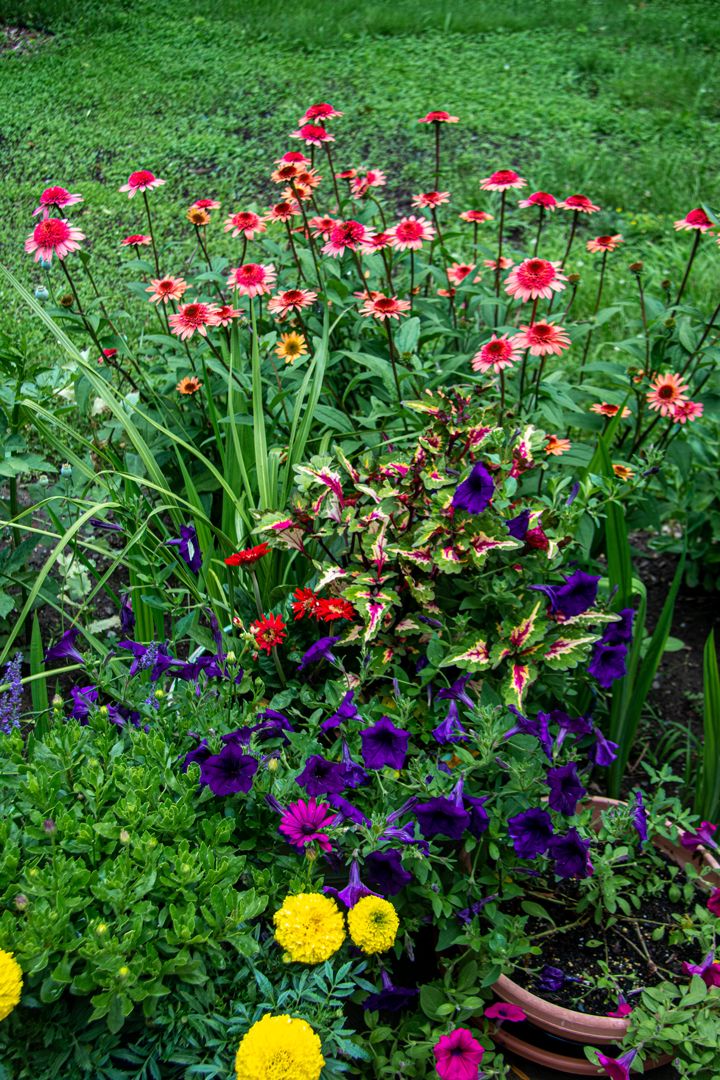26th Annual Soroptimist
SECRET GARDENS TOUR
SECRET GARDENS TOUR
WRITTEN BY BARBARA LOMBARDO
PHOTOS BY BRIAN HOFFMAN
PHOTOS BY BRIAN HOFFMAN
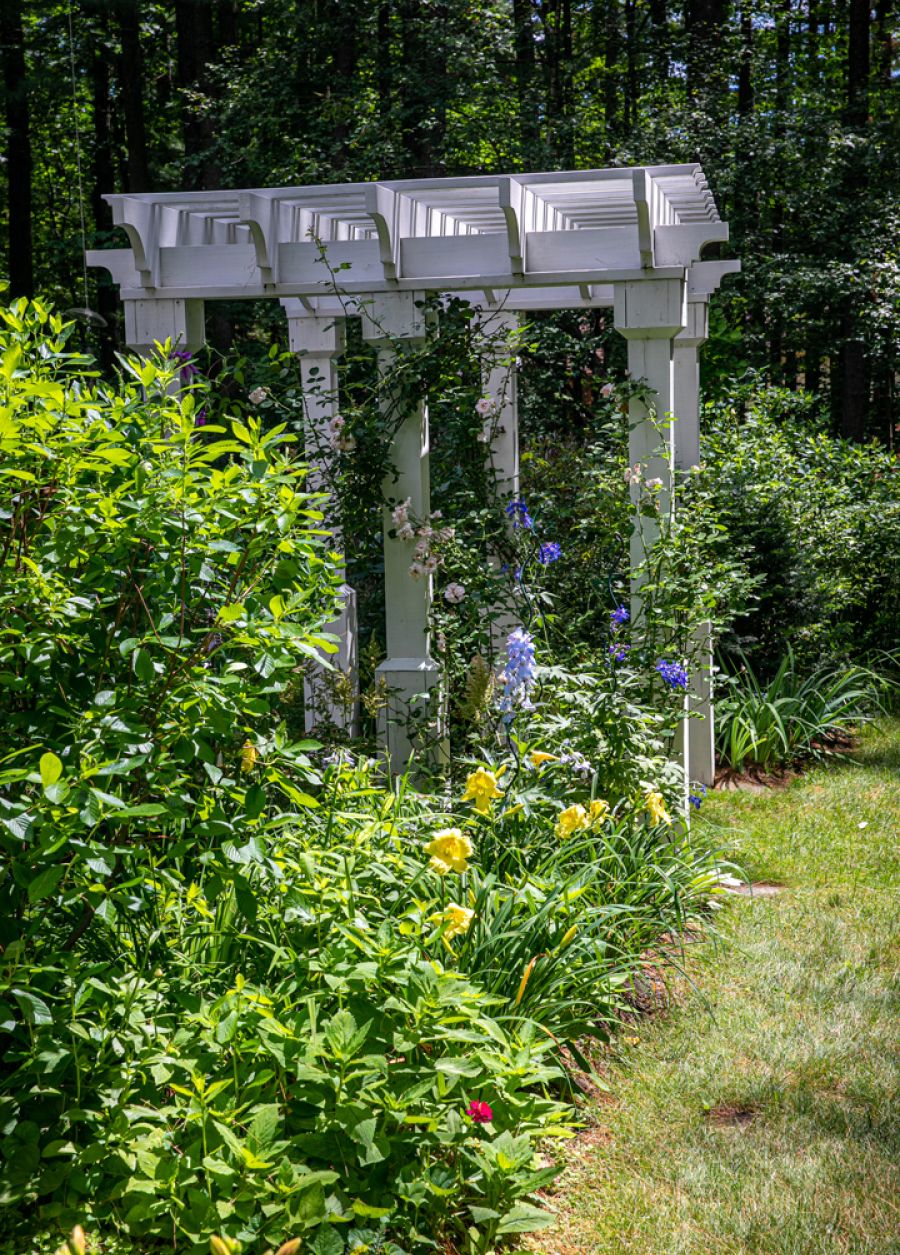
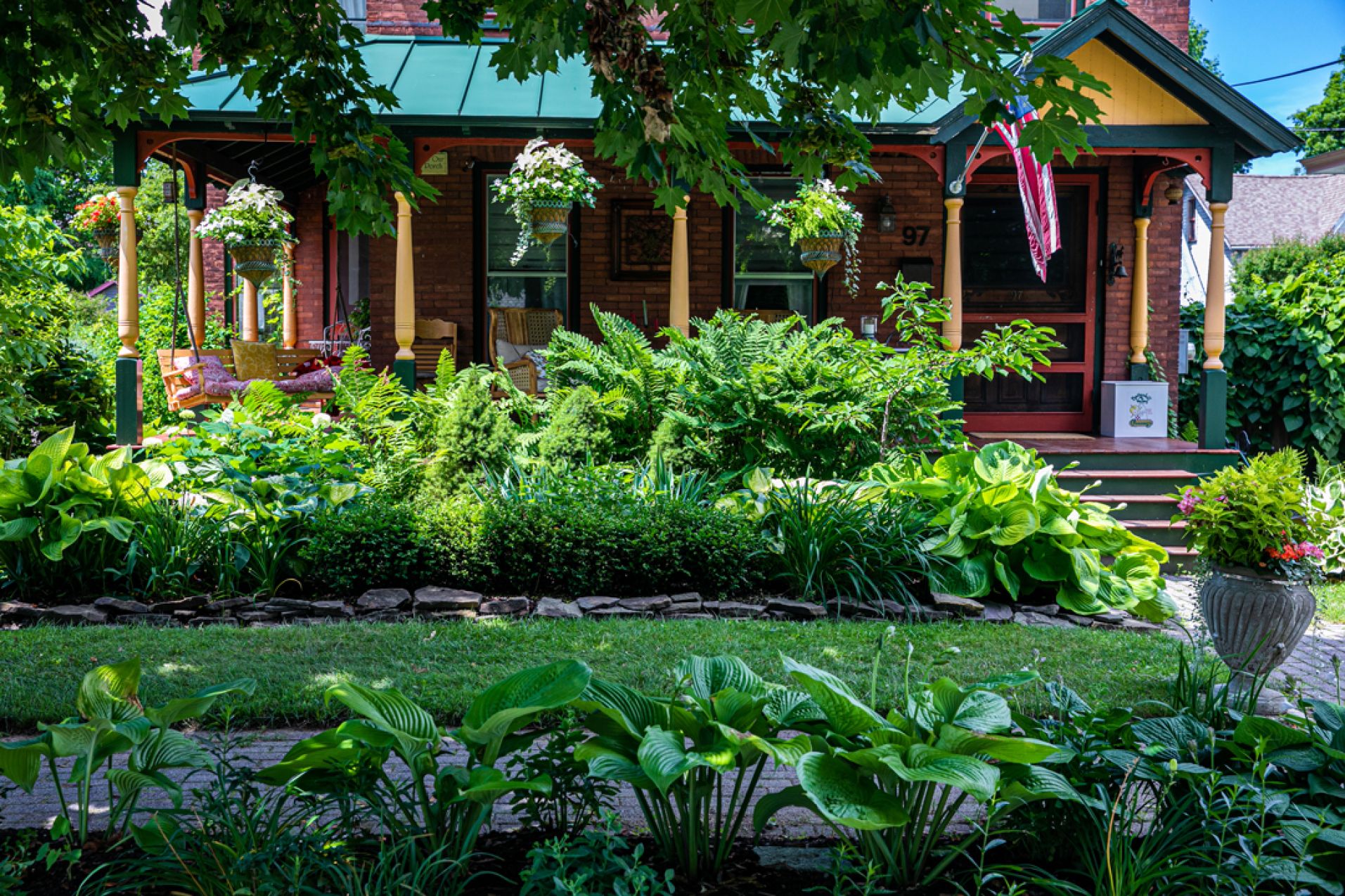
Mary Martin calls her backyard “The Garden of Love.” Everything she plants or places – flowers, rocks, iron works – is there to make her happy. “My garden philosophy is: You like it, you plant it!”
It’s taken 20 years to get her garden to where it is now, and Mary estimates it will take another 10 to complete it to her satisfaction. No rush. After all, she says, “It’s a labor of love.”
Lucky for us, Mary is sharing the love – for one day. Hers is one of 11 gorgeous gardens the public can experience on the Soroptimist Secret Gardens Tour slated for Sunday, July 11. The photographs on these pages taken by Brian Hoffman last July are a small sampling of what awaits tour-goers this year.
This year’s gardens are in Ballston Spa, Saratoga Springs, and Schuylerville. Visitors will find a wide variety of designs and plantings for both shade and sun. Some include water features, and others offer landscapes that incorporate one-of-a-kind mosaics and sculptures in both stone and metal. You’ll stroll through pergolas, follow a path to a monarch butterfly way-station, wander along a pond, meander past fruit trees and brush past grasses.
The Secret Gardens Tour is a major fundraiser presented by Soroptimist International of Saratoga County, the local branch of a 100-year-old nonprofit international service organization committed to improving the lives of women, girls, and their communities. Last spring, the group canceled what would have been its 26th annual Secret Gardens Tour in 2020 in light of the coronavirus pandemic. Now there is light at the end of the tunnel. People are expected to be able to safely enjoy a lovely Sunday in July (rain or shine, it’s always a beautiful day to visit gardens), while adhering to precautions such as mask-wearing and social distancing.
“The owners are excited to be a part of the Secret Gardens Tour, and we are so grateful for their generosity. We’re thrilled to be presenting a truly stunning variety of gardens,” says tour committee co-chair Cheryl Martin (no relation to gardener Mary).
Three of the five Saratoga Springs gardens on the tour are adjacent in-town properties. The owner of the middle house, Heather Madigan, says she has been “blessed with wonderful neighbors on each side.” They enjoy greeting passersby on their morning walks, she says, “many stopping to bathe their senses in the aromatherapy from the lavender in the front beds.”
Heather’s chemical-free gardens are water conscious and mindful of the sun and elements. She strives to create spaces where something is blooming at all times, while supporting indigenous species. A portion of Heather’s backyard space is intended for urban farming, with herbs, vegetables and organic free-range chickens housed in quarters made primarily out of up-cycled and recycled materials. “The quirky birds have provided an amazing learning experience,” she says, for her own and other neighborhood children.
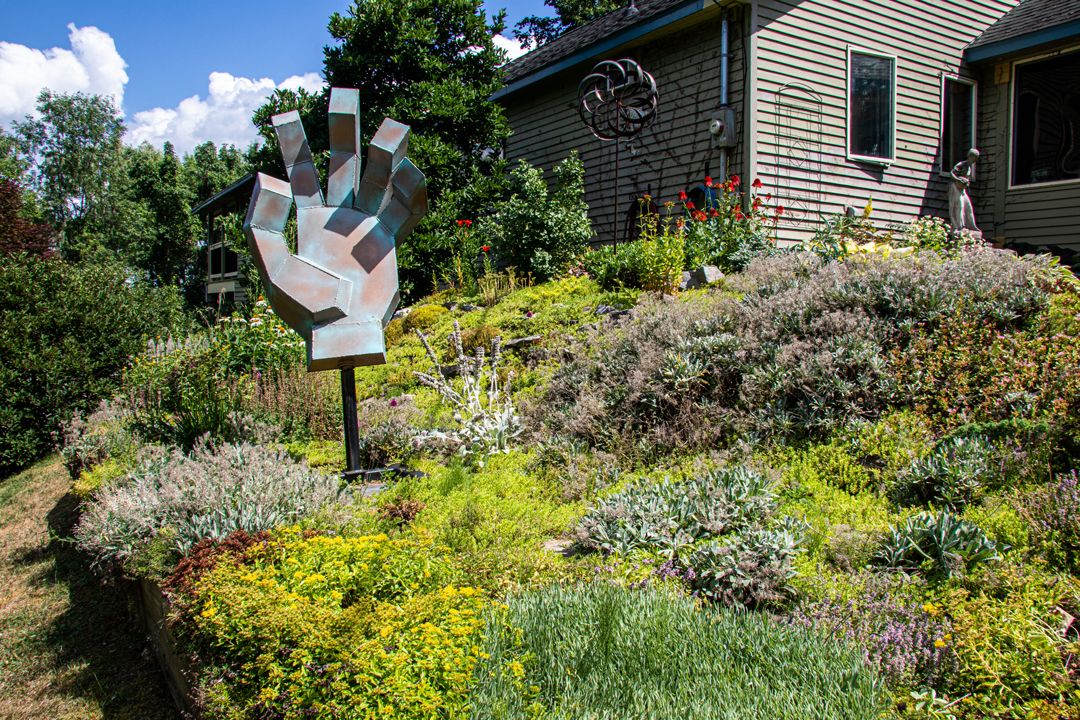
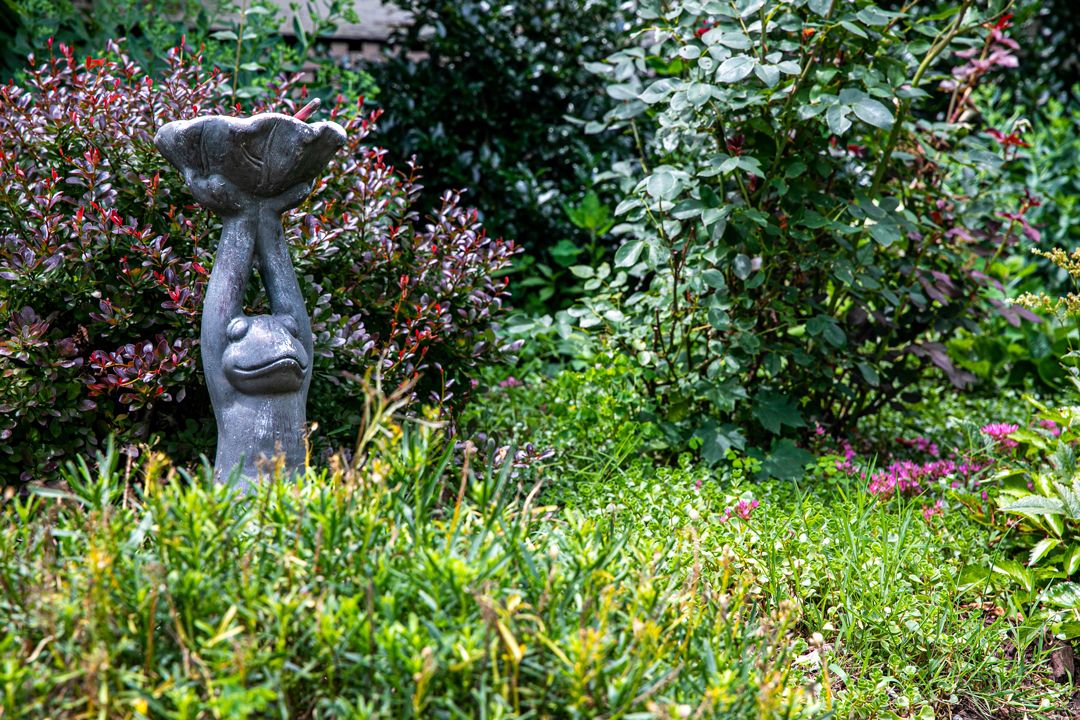
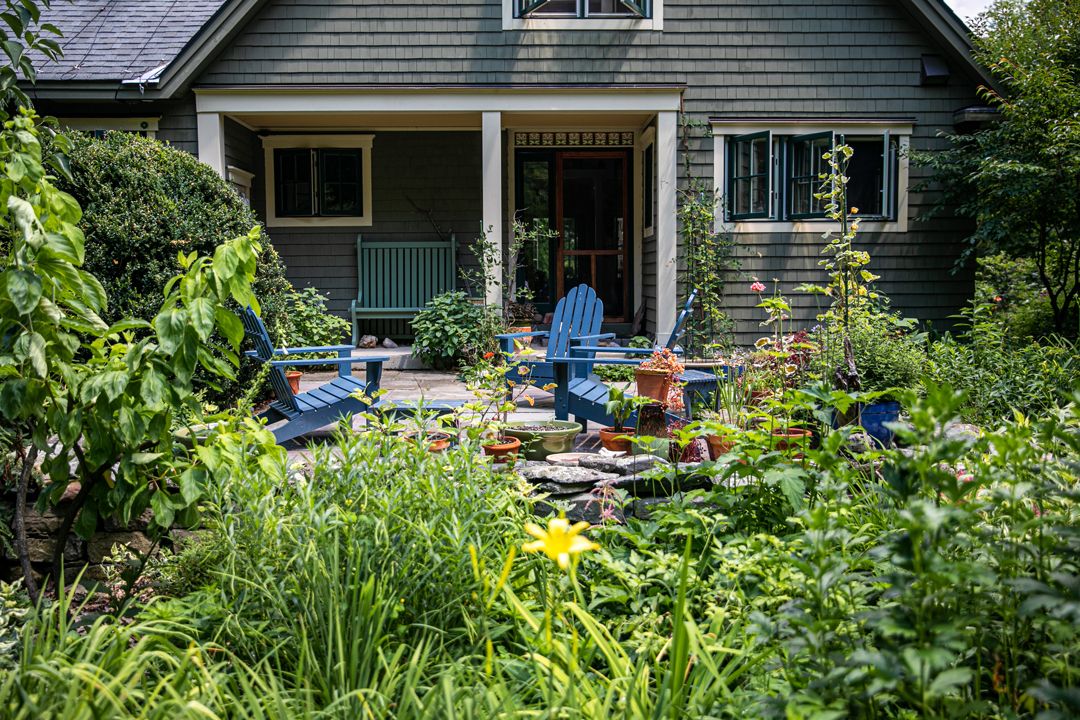
SAVE THE DATE:
SUNDAY, JULY 11, 2021
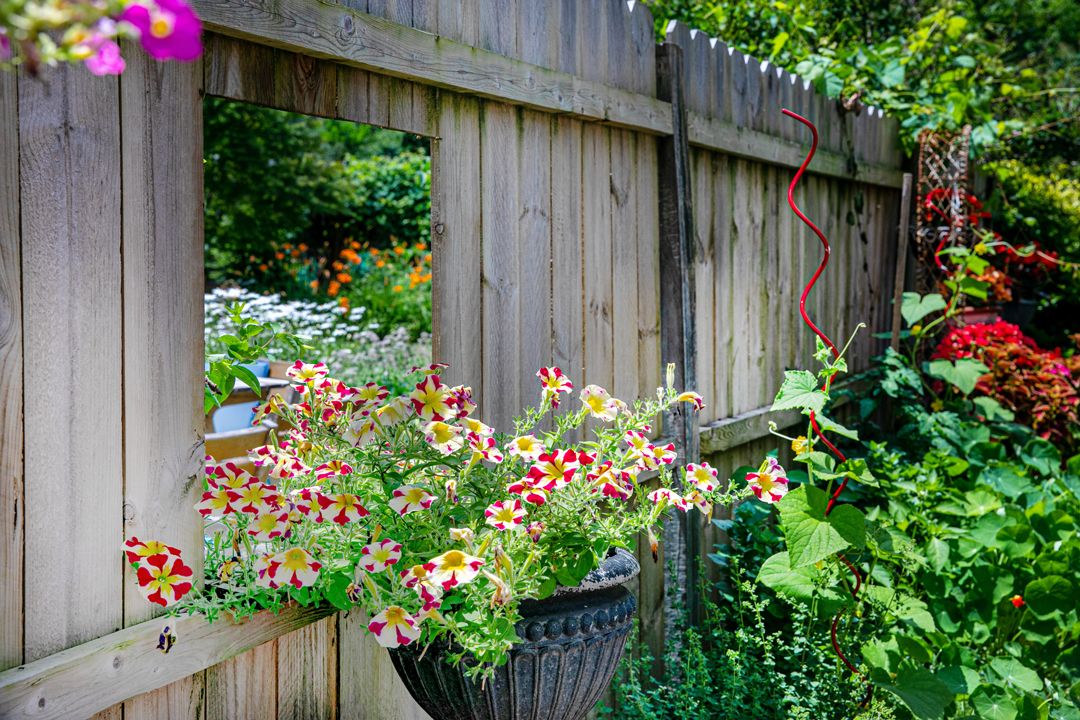
Heather’s home is in between Mary Martin’s Garden of Love and the home of master gardener Kimberly Purdy and her husband Eric. The Purdys’ move five years ago from a large property in Greenfield to a typical city plot brought the challenge of creating a garden in a concentrated space. Their garden evolves each year, and has included the incorporation of edible elements, such as apple and cherry trees, blueberries and herbs. Kim shares plants and ideas with her neighbors, one of her favorite parts of living in town. “There are elements of Zen and controlled chaos,” says Kim about her holistic approach to gardening.
There seems to be a theme here, as Richard Hasenauer and Patricia Nugent describe their Saratoga Springs secret garden as “Zen in the City.” Mature trees, such as cypress, Japanese maple, dogwood, oak, and mountain pine, create a wooden canopy alongside a mahogany half-circle deck. Sitting and meditative areas are accessible throughout the yard, and natural paths lead through trellises to inspirational adornments. Bird baths, stone cairns, and soft solar lighting contribute to the peaceful ambiance. Intentional plantings, such as tall Shasta daisies, black-eyed susans, phlox, lilies, and lavender, and bushes, such as multi-hued roses, rhododendrons, dwarf lilacs, hydrangea, and spirea, co-exist with free-range wildflowers, including red trillium and goldenrod. Friends, neighbors, and former residents contributed many of these, creating a sense of continuity and community.
Among the four stops in Ballston Spa is the garden of Glenn and Barbara LaGrone. They moved in 2005 to what Glenn describes as “a blank slate, with the house looking like it had been dropped in the middle of a golf course sand trap.” He says they had 11 dump trucks of topsoil delivered and “dug in.” Through the years they’ve learned to embrace the acidic soil and shade rather than fight them.
Creating a welcoming habitat for birds and small animals is high on the LaGrones' list of goals, so visitors will find many shrubs and trees that provide both shelter and food while providing a lovely show of blooms, color, and multi-textural foliage. Two oversized pergolas are distinctive backyard features. The shade gardens on the north side of the house are their personal favorite, very textural and soothing with a babbling water feature and a winding pathway to draw visitors into a little sitting area.
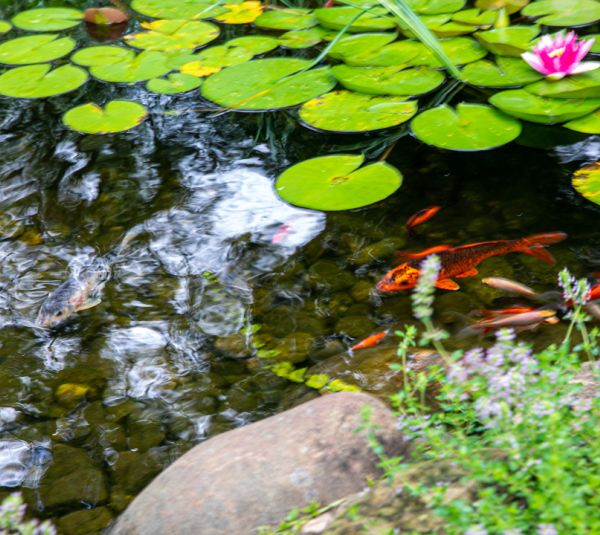
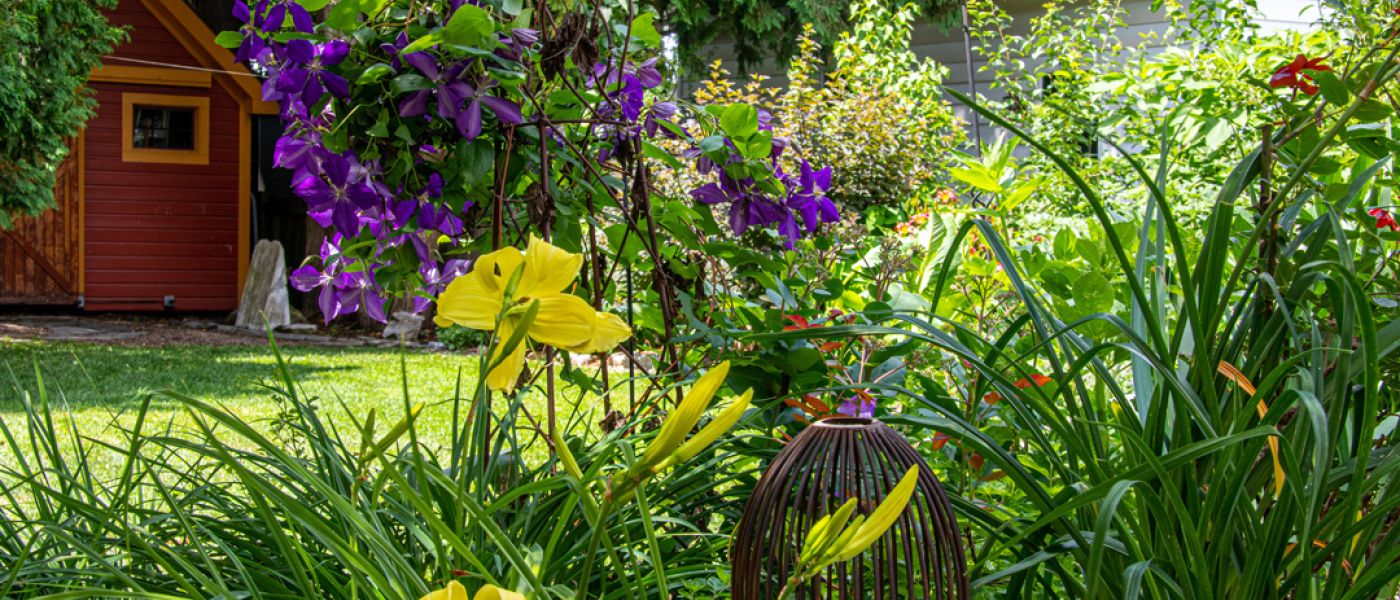
Down the road a bit is the fairy-tale garden of Chris Burghart, which she describes as not only a habitat for plants but “a magical ecosystem for all of Mother Nature’s creatures.”
Except for a week in May 2016 when her husband, Karl, borrowed a backhoe from a buddy to dig the hole for the pond, and that Memorial Day weekend when a small group of awesome friends came to help lay the stones, Chris has done it all herself. Over the years she has brought in tons of plants, mulch, stone and compost via the trunk of her small Nissan. Compost/mulch is acquired from local garden supply stores or by shoveling buckets from the town’s free compost pile. Earlier plant selections came from clearance sales, Craigslist offerings, plant divisions and donations from generous veteran gardeners. Chris now enjoys giving plants away to new gardeners.
Visitors are encouraged to peruse “Chris’ Garden Guidelines” upon entering the backyard. Then tough decisions must be made about what to do first. Admire the glass mushroom patch that Chris has “grown” in her indoor studio during the winter months. Listen to the babbling stream that draws you to the home of koi, goldfish, little green frogs, and shimmering dragonflies. Meander the path to the shade-loving perennials to glimpse birds joyfully bathing in the stream or bird bath. Head to the sunny “Pollinator’s Playground at Mosaics Crossing,” a registered monarch waystation that boasts the largest bouquet of Chris’ home-made mosaic steppingstones and her magnificent totem pole. Or reflect upon the signage at the potting shed and discover which words speak to you. Decisions, decisions!
No matter which direction you wander there is much to observe among the more than 200 genera of plants and colorful butterflies, songbirds, squirrels and chipmunks, lively frogs, bees and birdhouses, and a wide variety of statuary from slugs to angels. Keep looking and you’ll discover another hidden treasure in the Burgharts’ secret garden. Chris is happy her hard work has paid off. “Not that I consider this work,” she adds.
Also in Ballston Spa is the property of Liz Kormos and Sander Bonvell, whose garden has matured significantly since being on the tour several years ago. Swamp milkweed, tussock sedge, turtlehead, Louisiana iris, blue flag iris, cardinal flower, arrow arum and various ferns compete with one another in a bog garden livened up with decorative glass and statues.
The native shrubs and trees planted eight years ago are now good-sized and include clethra, spicebush, Nanking cherry, oak leaf hydrangea, winterberry, inkberry, ninebark, lilac, Swiss stone pine, October glory maple, Carolina silverbell, red bud and fringetree. Native grasses, prairie dropseed and switch grass planted behind the driveway turnaround have been divided twice. Liz confesses to being a “plant fanatic” who keeps adding new plants from garden club sales and local nurseries to tuck into any empty space she can find.
Their vegetable, fruit and herb gardens supply produce all summer long; their berry plants yield strawberries, blueberries, raspberries, currants, and gooseberries. An arbor supports three varieties of grapes and hardy kiwi, and a small fruit tree orchard is now producing peaches, quince, cherries, Asian pears and pawpaws. Visitors will find 13 raised beds, each built by Sander, who has become an expert in composting and has started a local-restaurant-to-gardener composting initiative. A plus for visitors: Almost all the plants are labeled.
This year’s tour also features two special stops in Schuylerville: Cathy and Neil Roberts’ Fiddle-i-fee Farm and Susie Kane-Kettlewell’s ever-evolving garden.
Fiddle-i-fee Farm is a melange of fields, woodlands and wetlands rolling to a bluff above the Hudson River. Arborvitae, larch, bald cypress, sycamore, sweetgum, tupelo, magnolia, pawpaw, persimmon, and many willow species enrich the hedgerows and swales. A tulip tree, the tallest hardwood species in North America, that they planted four decades ago now rises south of the house. Its flowers, which buzz with bumblebees in June, have seeded descendants of varying ages around it. An oriental Katsura tree, its nearest neighbor, strives to grow as tall.
A prairie reconstruction was seeded with native flowering plants and grasses 20 years ago. It shares a former hayfield with an orchard and vegetable garden. Head-high native Coreopsis, Goldenrod, Helianthus, Joe Pye and Ironweed add textural variety as well as feeding bees, wasps, and butterflies.
An expansive informal garden billows around an Arts and Crafts style house, borrowing views from nature. Daylilies erupt throughout, many chosen for their extra height and lateness of bloom. “Foliage is as important as flowers,” says Cathy, and leucosceptrums, hydrangeas, and hostas provide both. Shrubs, both evergreen and flowering intermixed with perennials, provide structure. A mature Stewartia pseudocamellia anchors the house at the north. Cultivars of vining honeysuckle and species Clematis add further connection as well as fragrance. Variegation is used as a source of light in shade. Plantings are encouraged to frolic and merge, providing interest in every season.
“I’m naturalistic. I like things to blend with the woodlands. It’s not just gardens that surround a house. We sort of made our own park,” Cathy says. Their entire 140 acres is protected from development and subdivision by a conservation easement maintained through the nonprofit organization Saratoga PLAN (Preserving Land and Nature). “We love this land,” she adds.
A quick ride brings you to yet another unique garden that is the creation of Susie Kane-Kettlewell, an artist, horticulturalist, and garden designer. Susie’s garden has been on the Secret Gardens Tour before, but gardens evolve and hers is no exception. It is full of familiar plants as well as unusual or hard-to-find specimens. It also features a parterre, several sun rock gardens, an experimental shade rock garden and a moss garden. In addition to taking in the variety of flora, visitors will discover an eclectic mix of contemporary sculptures by regional artists: ceramics by Leslie Ferst and Hannie Varosy, metal pieces by Michelle Vara, and sculpture by Paul Schneider, who tends to use a wide array of natural materials in his work, often incorporating native plant material.
In addition to enjoying nine diverse private gardens,
tour-goers are invited to reflect in the mostly shaded Memory Garden tended by parishioners of the Church of St. Peter in Saratoga Springs, and take in the fragrant plantings of the Thymly Herb Group at the Brookside Museum in Ballston Spa.
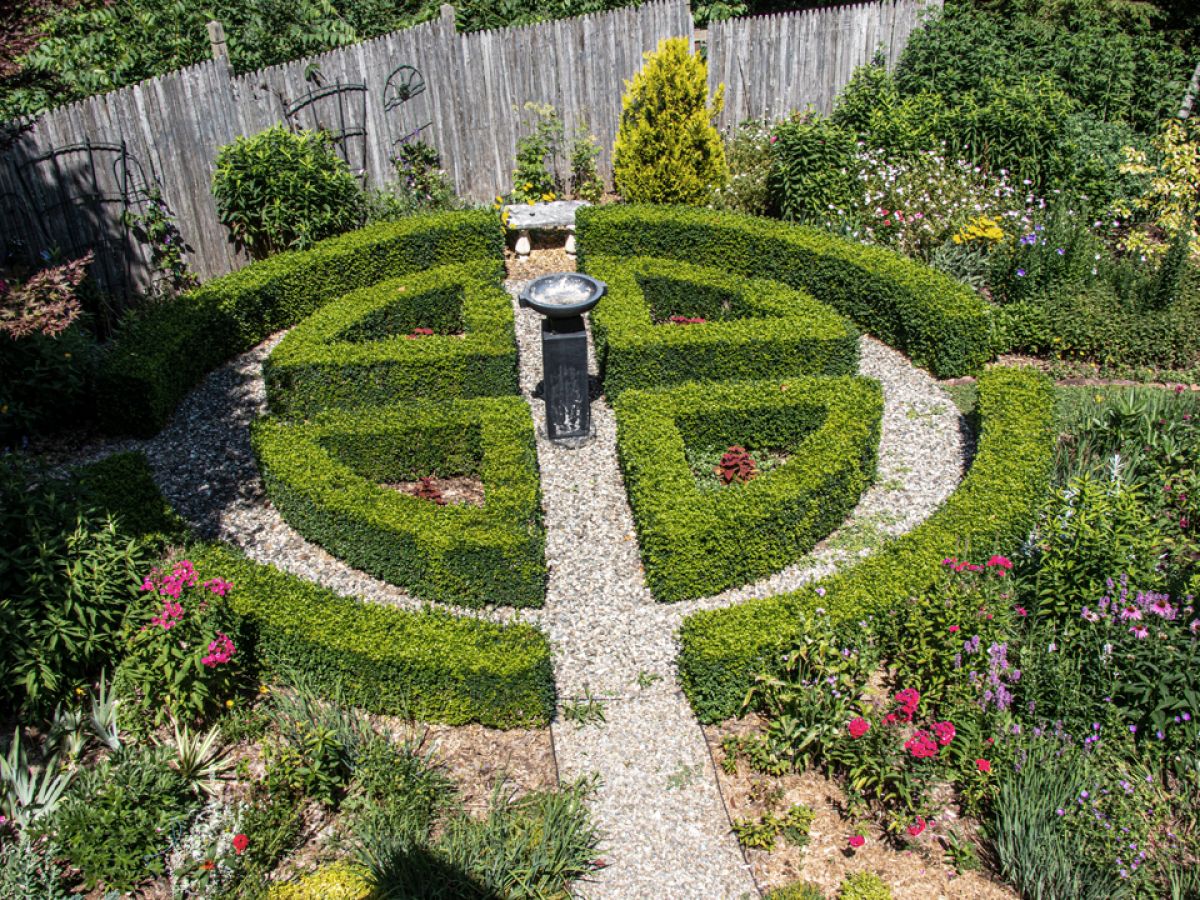
The church garden courtyard, tucked away from the hustle and bustle of Broadway, is punctuated by a mix of unusual trees, notably a Ginkgo-Biloba and a Catalpa, a descendent from seeds brought to Saratoga Springs by late 19th and early 20th century Italian immigrants, plus mature Black Walnut and Spruce specimens. Benches and chairs provide comfort to visitors as they take in the colors, smells, and textures of the garden provided by a collection of shrubs, perennials, and annuals. To the west of the courtyard is a small but colorful planting area that welcomes church visitors. Parishioner and devoted gardener Tim Burtman explains that the current garden designs were inspired by Dr. James Noonan and Rick Dunn, two dear friends of the church who are now deceased.
At the Brookside Museum, the Thymly Herb Garden is divided into four sections — culinary, medicinal, fragrance, and dyers’ herbs — separated by a cruciform pebble walk. Each section features herbs that were commonly used during the postcolonial period; many are still used today.
Tickets for the July 11 tour can be pre-ordered at www.soroptimistsaratoga.org and, later this spring, purchased at retail locations that will be listed on the website, where more about Soroptimists, its mission and how to get involved can be found. One of Saratoga Soroptimists’ major local partners is Wellspring, which provides support services for victims of domestic violence and assault.
Garden tour tickets are limited. They are $20 in advance and $25 on day of tour, if still available. The club provides suggested driving directions and descriptions of the gardens, which will be open to visitors from 11 a.m. to 5 p.m. The tour is self-guided, and you go at your own pace. The tour is geared for adults, but there is no charge for children 12 and younger. Pets are not permitted. Questions can be emailed to
Soroptimists and the gardeners hope to see you on July 11!
